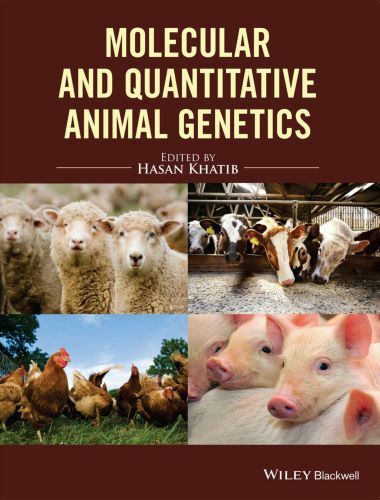Molecular and Quantitative Animal Genetics, Animal genetics is a central topic in upper-level animal science programs.
Molecular and Quantitative Animal Genetics

Filling a void in existing literature on animal science, Animal Genetics introduces genetic principles and presents their application in production and companion animals. The book details population and quantitative genetics, epigenetics, biotechnology, and breeding among other topics. Useful in upper-level studies, Animal Genetics is an irreplaceable educational resource.
Download More: Introduction to Veterinary Genetics 3rd Edition
The challenges in animal genetics for today’s students and instructors are to cope with the fast growing body of information related to genetics research, to gain basic skills of problem solving, to make use of genetic knowledge in real life applications, and to deal with the ethical and social aspects of genetics research. The aim of this book is to provide students and instructors with up-to-date knowledge to meet these challenges. Recent developments in high throughput technologies (e.g., next-generation sequencing) has had an enormous impact on our understanding of molecular and quantitative genetics. These new technologies require that both molecular and quantitative skills are needed to deal with the challenges of animal genetics research. Genetics is one of the most dynamic topics in biology in terms of flow of new information on a daily basis.
The changing environment of twenty-first-century teaching and learning is a challenge faced by both students and instructors. What is the role of the instructor in the era of massive internet information available to the students? What is the role of students in the learning process? What is the difference between teaching and learning? These questions and others are discussed in 1 which provides an overview of teaching vs. learning and discusses the fundamental ways by which learning occurs.
The first section “Quantitative and Population Genetics” focuses on the statistical and quantitative aspects of animal genetics. Included in this section are inbreeding and inbreeding depression, genomic selection, crossbreeding, basic genetic model for quantitative traits, heritability and selection, heritability and repeatability, and applications of statistics in quantitative traits. Section 2 “Applications of Genetics and Genomics to Livestock and Companion Animal Species” deals with genetic improvement programs for beef cattle, sheep, dairy cattle, and pigs. It also describes the recent research developments of genetics and genomics of the horse, dog, sheep, and goats. The genetics of color and genetic defects in horses, domestication of dogs, the dog genome, current status of the sheep genome, genetics and domestication of goats, and new genetic technologies are discussed in detail in this section.
| PDF Size: 18 MB | Book Download Free |
Password: pdflibrary.net
